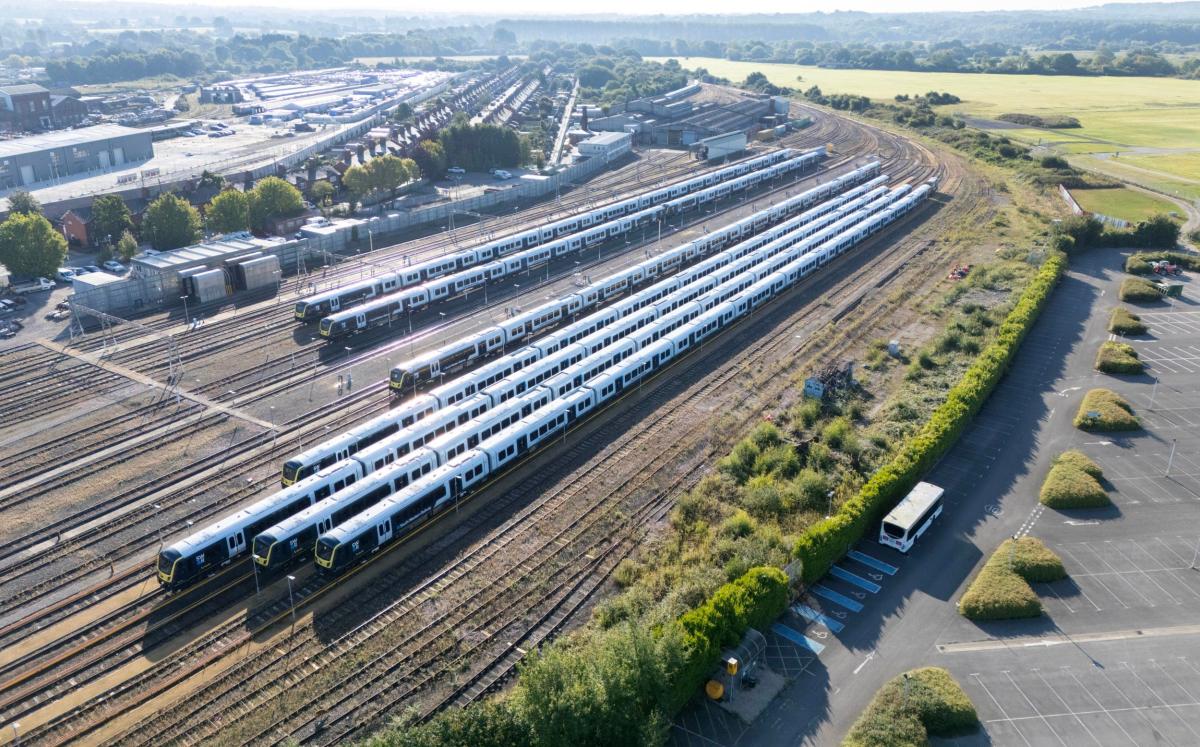A £1 billion fleet of commuter trains has been left idle in storage for years after trade unions objected to the size of their windscreen wipers.
Ninety Arterio trains were bought for South Western Railway (SWR) to replace 40-year-old ex-British Rail carriages that are still in use on commuter lines out of London Waterloo.
However, the Derby-built fleet has been delayed from entering full passenger service for years, partly because train drivers’ trade union Aslef raised objections to the size of its windscreen wipers, The Telegraph can disclose.
Union reps claimed the wipers were so big that they blocked drivers’ views of the trackside signals used to tell trains when to stop and go.
The Arterio train has one of the largest windscreens of any modern UK train, with other designs (such as the Siemens Desiro also used by SWR) restricting the driver to a small side window so a connecting gangway and door can be fitted beside him.
Problems with couplers used to connect the trains together, electrical traction equipment and even cab doors that “proved difficult to open” have also delayed the Arterios’ entry into use, according to Rail magazine.

SWR has acknowledged the flaws and says it aims to get 10 of the new trains into service within the next four months, once the company’s 700-plus drivers have been trained on them.
Aslef is said by SWR sources to have dropped its objections to the trains as part of a deal for a 15 per cent pay rise with Louise Haigh, the Transport Secretary, earlier in 2024.
SWR is only running two Arterios every day out of London Waterloo despite promising to have all of them operational years ago.
A spokesman said: “As is well documented, introducing the Arterios has been a major and complex project, introducing both a new fleet and method of operation, while facing extensive production and software issues and all against a backdrop of Covid and industry recovery.”
Gareth Dennis, a railways expert, said: “From a software perspective, it has become more and more difficult for Derby to create a train that works within a reasonable timescale.”
Flaws and union intransigence both contributed to the delays to the Arterios’ entry to service, which was scheduled for 2020 when the trains were ordered in 2017.
‘Not fit for purpose’
Most of the Arterio fleet is now stored in depots around the country, such as a vast railyard at Eastleigh, Hants, instead of being driven on commuter services.
And rather than travelling on the modern air-conditioned vehicles, SWR passengers are instead crammed into trains so old that the company even repainted one in heritage British Rail livery to celebrate its 40th birthday.
Sources within SWR admit the first Arterios received from Alstom, the manufacturers, were “not fit for purpose”, with some having to be sent back to be reworked.
An insider said: “There was a lot of production line disruption during Covid.
“It took a long time to get the unions to agree to a new method of working as well.”
The SWR spokesman added: “Our first train entered customer service earlier this year and, following good progress on training colleagues and the trains performing well, we are now expanding the phased rollout of the 90-strong fleet, as evidenced by the new service to Shepperton this week.
“This is an important milestone on the Arterio programme and another step toward the full rollout of the fleet of 90 Arterio trains that are set to transform capacity and comfort on SWR’s suburban network.
“We’re looking forward to introducing more Arterio services and will be sharing the wider rollout plan in due course.”
Both Aslef and Alstom were contacted for comment.

